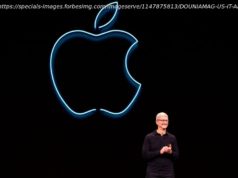Unprecedented and. .. Precedented On May 28, President Trump signed an Executive Order pointing the way toward future action that the federal government might take, reining…
Unprecedented and. .. Precedented
On May 28, President Trump signed an Executive Order pointing the way toward future action that the federal government might take, reining in the power of social media platforms, such as Twitter and Facebook.
As Trump said in the Oval Office, the Silicon Valley companies have “unchecked power to censor restrict, edit, shape, hide, or alter virtually any form of communication between private citizens or large public audiences.” He added, “There’s no precedent in American history for so small a number of corporations to control so large a sphere of interaction.”
Actually, there is a precedent, and it speaks loudly to the inevitability of significant regulation on social media—but we’ll get to that later.
Yet first, we should note that in the wee hours of May 29, the Trump-vs.-social-media confrontation took a new leap to outright censorship—and there was no precedent for that.
Reacting to the ongoing riot happening in Minneapolis, Trump tweeted:
And then, in a second tweet, Trump added:
Whereupon Twitter took it upon itself to hide the second tweet and insert a note: “This Tweet violated the Twitter Rules about glorifying violence.”
Okay, so that is an unprecedented confrontation: a Silicon Valley company, one that didn’t even exist 15 years ago, accusing the President of the United States of “glorifying violence” and censoring his words. And all that was before the recent spate of violence in the streets; it remains to be seen what the tech companies will do in response to what Trump does.
In fact, just on June 1, some Facebook employees staged a “virtual walkout” to protest the company’s editorial policies, which they judge to be too easy on Trump. In response, on June 5, Mark Zuckerberg posted an item on his own Facebook page indicating that he would accede to this pressure. In the meantime, on June 3, another social media platform, Snap, announced that it was somewhat restricting Trump’s prominence. Yet so far, at least, the hottest fireworks have concerned Trump vs. Twitter.
The Trump-Twitter Rollercoaster
As we ponder this POTUS-Twitter confrontation, it’s worth recalling that the president has had, in fact, a long love-hate relationship with Twitter. (Amusingly, on the 28th, the White House immediately tweeted the news of Trump’s anti-Twitter Executive Order.)
Trump has been on Twitter since 2009. And over the last 11 years, he has used that digital platform to help propel himself from celebrity mogul to presidential candidate to actual commander-in-chief. Indeed, he now boasts 80.4 million followers; that’s an audience that dwarfs any single media portal—no wonder he loves that aspect of Twitter.
Yet in the meantime, conservatives were growing restive about Big Tech’s political correctness, which has led to a hostile, even censorious, relationship with the right and with Republicans. This GOP distrust represented a significant shift in the party, shifting from the old pro-corporate libertarianism of, say, Rep. Paul Ryan, to the new populist activism of Sen. Josh Hawley. In fact, it’s fitting that Hawley came into office in January 2019, just as Ryan was retiring.
In the meantime, conservatives began to speculate about what sort of regulation might be in the offing. And so we might pause to take note of a piece written here at Breitbart News in August 2018, prophesying the significant regulation of Big Tech—taking the form of a new Federal Platform Commission and building, perhaps, on the Federal Communications Commission.
Such a regulatory apparatus would acknowledge the obvious: that the platforms are so woven into our lives that they have become, in effect, common carriers. “Common carrier,” of course, is a legal term bespeaking the status of a carrier—be it a road, a canal, a telephone line, or now, a digital platform—as being equally open to all customers. Common carriers have not only rights that need to be protected, but also duties that need to be fulfilled. And since the public interest—often defined as “convenience and necessity”—is involved, the fees and other activities of common carriers are usually regulated by some sort of government authority, such as a public utilities commission.
Yet for his part, Trump wasn’t yet there, regulation-wise. Indeed, for the first two years of his presidency, his administration did little or nothing that impacted Silicon Valley’s lefty ways.
But that situation started to change in 2019. In March of last year, Trump accused Silicon Valley of harboring a “hatred [for] a certain group of people that happen to be in power, that happen to have won the election.” That is, to say, hatred of him. Trump even raised the prospect of possible federal action to address the matter, suggesting that Uncle Sam might “have to do something about it.”
In April of last year, Trump reflected on the strangeness of his love-hate relationship with Silicon Valley and, in particular, with Twitter. That is, the companies loved him for the traffic he generated, even as they hated him, seemingly, for everything else. As the president wrote in a two-part tweet:
Yet then Trump pulled a Trumpian surprise. He hosted Twitter CEO Jack Dorsey at the White House, and later tweeted:
For its part, Twitter responded with a friendly statement of its own:
So those were the warm feelings of 2019.
New Year, New Feelings
Yet in 2020, the Trump-Twitter relationship cooled—to the point of being very cold. On May 26, Trump tweeted about the danger to Republicans of mail-in ballots, a point he had made many times before. And yet this time, Twitter decided to add its own commentary, declaring that Trump was wrong and citing the reportorial wisdom of “CNN, Washington Post, and others.”
We might pause over the significance of Twitter’s venture into overt editorializing. All of a sudden, Twitter went from being a digital “bulletin board” in the proverbial “public square”—that is, a common carrier—to being just another MSM outlet, echoing MSM opinions. (As an aside, we can see that Twitter’s citation of the Washington Post for the pooh-poohing of vote fraud did not include the opinion of lonely conservative there, namely, Marc Thiessen, a former Bush 43 speechwriter, who headlined his recent op-ed in the Post, “Trump’s concern about mail-in ballots is completely legitimate.”)
By now, Trump was on the warpath—and still using Twitter, of course. On May 27, he tweeted:
And the following day, he added:
That last name that Trump cited is the Twitter handle of Yoel Roth, whose title is “Head of Site Integrity” at the company. Roth, we might note, is so committed to “integrity” that he once tweeted that the Trump White House contains “ACTUAL NAZIS.”
Twitter’s hypocrisy here—judging Trump and nobody else—is so thick and gooey that one could cut it with a smartphone.
Start
United States
USA — Art Pinkerton: Trump vs. Twitter – How the Long Struggle Begins and How...






